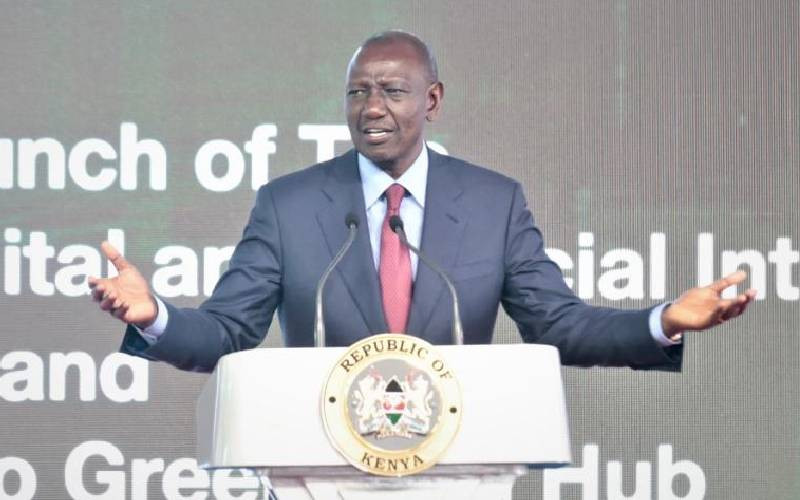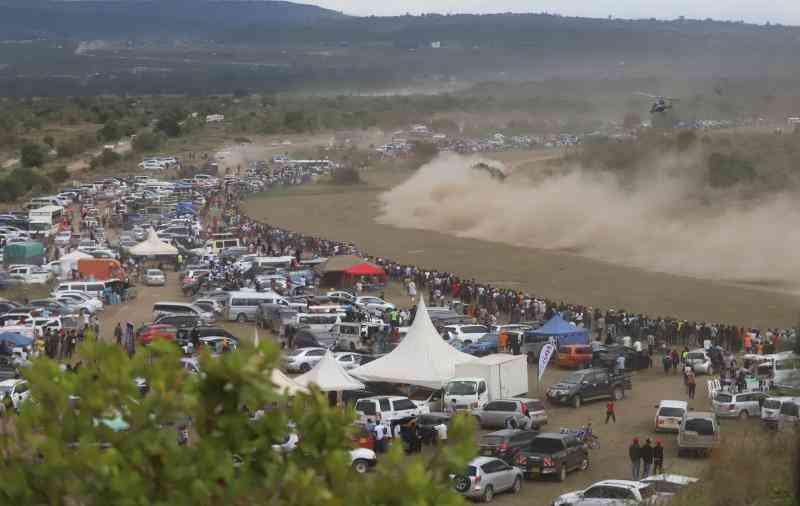By John Njiraini
The fall from grace of former Kenya Tourist Board (KTB) Managing Director Achieng’ Ong’ong’a last week brought to a close one of the most visible and memorable chapters in the history of the country’s tourism sector.
For a man who single-handedly put Kenya’s tourism sector back on the map, linking his former office with corrupt activities and his ultimate resignation and replacement was shocking.
"Today is a sad day for the tourism sector," Mr Mohamed Hersi, chairman of the Kenya Association of Hotelkeepers and Caterers, said on Thursday, last week.
Going by the numerous praises and accolades, including Presidential commendations, Dr Ong’ong’a received over the last six years, it was sad that a man whose name was synonymous with tourism crumbled in the face of corruption.
When Ong’ong’a was appointed to head KTB in November 2003 KTB was a dull and colourless State corporation and the tourism sector was in the doldrums.
An outsider in the hospitality industry, the former lecturer only came to the job armed with the right qualifications and a commitment to inject life in struggling KTB.
Besides being crippled by the effects of terrorism on the Kenyan soil, very little efforts were being made to market tourism. In effect, millions of tourists were diverting from visiting Kenya to countries like South Africa, Morocco and Egypt and the country was losing billions in lost revenue.
According to the Tourism Trust Fund (TTF), the sector earned Sh21.6 billion in 2000 with tourist arrivals standing at 506,365.
 |
Friend or foe? Tourism Minister Najib Balala (right) and former KTB Managing Director Achieng’ Ong’on’ga. Balala announced the resignation of Ong’ong’a and the appointment of Ms Maryanne Ndegwa to replace him at KTB. Photo: File |
Then, tourism was second to agriculture in contribution to the gross domestic product, accounting for 12.7 per cent. The industry also accounted for 16.5 per cent of export earnings, 11 per cent of exchequer revenue, 9.2 per cent of total formal wage employment and 60 per cent of informal sector employment. But 2002 stood out to be the worst year for the industry as it was characterised by travel advisories, withdrawal of international charter, while scheduled air revenue increased marginally to Sh23.6 billion, with the number of visitors standing at 521,532.
Worst moments
Turning around the declining fortunes of the sector required huge amounts of money and the Government’s budgetary allocation for marketing, advertising and promotional activities was depressingly low. In 2002, the total budgetary allocation for the ministry was a mere Sh400 million. This compares badly with countries like Tunisia and South Africa, which spend Sh3.6 billion and Sh4.5 billion. "To market the Kenyan destination, we need lots of money," he said.
The Government responded positively and the sector got a financial boost when Treasury in collaboration with the European Union (EU) established the TTF, a quasi-autonomous institution through which the EU would channel funds to support the industry. The rollout of the Tourism Market Recovery Plan and the aggressive marketing of Kenya in Europe and America, the country’s traditional source markets helped in the recovery efforts. The initiative blended well with a drive to explore new frontier markets in Eastern Europe and Asia.
Stay informed. Subscribe to our newsletter
This twin approach strategy resulted in a remarkable turnaround of the industry.
Marketing
In the thick of everything, Ong’ong’a was always on the driving seat heading marketing delegations to all corners of the globe.
By 2007, his efforts paid off. First, Kenya’s tourism earning hit a record of Sh65 billion with tourists arrivals standing an all time high of two million.
Then came the naming of the annual Masai Mara wildebeest migration as the Seventh Wonder of the World. And to cap it all, President Kibaki honoured him with state commendation. But these accomplishments were to be short-lived.
A disputed presidential election in December 2007 that resulted in wanton destruction and bloodbath swept away all the gains achieved.
Yet again, tourism was on its knees and the country was looking up to ‘Mr Fix It’. During the first-half of last year, earnings tumbled by 23 per cent to Sh23 billion, an indication that the violence had badly battered the image of the country.
Despite the difficulties he encountered like securing funding from Treasury to push the recovery programmes, Ong’ong’a never lost sight of the ultimate price to see the sector back on its feet, or so it seemed.
KTB in collaboration with other sector players mobilised Kenyans to attend last year’s wildebeest migration in Masai Mara. The event, which was beamed live on national television culminated with Kibaki going to the Mara personally to help promote the sector.
Questionable deals
However, the success of the event would also mark the beginning of the end for Ong’ong’a. Though the trip was fully paid by the private sector to a tune of Sh800,000, KTB went ahead to authorise payment of Sh20 million to a company associated with one of its board member.
The Ministry of Tourism stopped the payment after a bank query. But it nevertheless raised questions about irregular deals that have been going on at KTB, including conflict of interests and loss of millions of shillings in corrupt deals.
"Somebody has been siphoning money from KTB. We cannot condone corruption," said Tourism Minister Najib Balala when he announced that Ong’ong’a had tendered his resignation and would be replaced by Ms Maryanne Ndegwa.
With the changes, the face of the tourism industry was painted black and the illustrious career of ‘Mr Fix It’ came to an abrupt halt.
 The Standard Group Plc is a
multi-media organization with investments in media platforms spanning newspaper
print operations, television, radio broadcasting, digital and online services. The
Standard Group is recognized as a leading multi-media house in Kenya with a key
influence in matters of national and international interest.
The Standard Group Plc is a
multi-media organization with investments in media platforms spanning newspaper
print operations, television, radio broadcasting, digital and online services. The
Standard Group is recognized as a leading multi-media house in Kenya with a key
influence in matters of national and international interest.
 The Standard Group Plc is a
multi-media organization with investments in media platforms spanning newspaper
print operations, television, radio broadcasting, digital and online services. The
Standard Group is recognized as a leading multi-media house in Kenya with a key
influence in matters of national and international interest.
The Standard Group Plc is a
multi-media organization with investments in media platforms spanning newspaper
print operations, television, radio broadcasting, digital and online services. The
Standard Group is recognized as a leading multi-media house in Kenya with a key
influence in matters of national and international interest.









